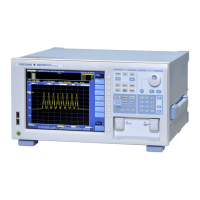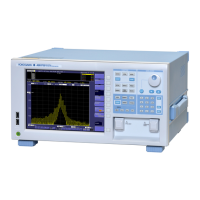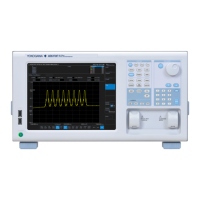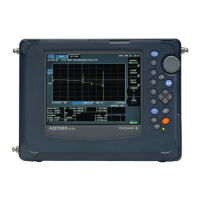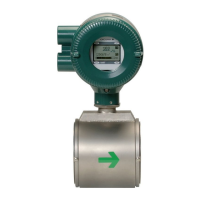Do you have a question about the YOKOGAWA AQ6375E and is the answer not in the manual?
| Wavelength Resolution | 0.02 nm |
|---|---|
| Level Accuracy | ±0.5 dB |
| Polarization Dependency | ±0.05 dB |
| Measurement Speed | Approx. 0.2 sec. (100 nm span) |
| Display Type | Color LCD |
| Interfaces | Ethernet, USB |
| Dynamic Range | 78 dB typ. (0.4 nm resolution, 1000 to 1100 nm) |
| Display | 10.4-inch color LCD |
| Dynamic Range (1550 nm) | 75 dB typ. (0.4 nm resolution) |
Describes the instrument's front panel components and their functions.
Details the various connectors and ports located on the instrument's rear.
Explains the functions of the instrument's front panel keys and rotary knobs.
Describes the instrument's liquid crystal display screen layout and elements.
Illustrates the instrument's system setup with connected peripherals.
Provides an overview of the instrument's measurement capabilities and sweep modes.
Explains how waveforms are displayed, including trace, marker, and search functions.
Details the various analysis functions available for measured waveforms.
Covers additional instrument functions beyond core measurement and analysis.
Provides instructions and precautions for safely installing the instrument.
Explains how to connect external devices like mice, keyboards, and USB storage.
Describes the correct procedure for powering the instrument on and off.
Details the process for performing optical alignment adjustment on the instrument.
Explains how to calibrate the instrument's wavelength accuracy.
Describes the procedure for purging the instrument with gas to improve performance.
Provides instructions for connecting the device under test (DUT) to the instrument.
Lists compatible optical fiber types and their usage limitations.
Explains basic touch panel interactions like tap, drag, and pinch for operating the instrument.
Details the structure and behavior of the instrument's function menus and soft keys.
Explains how to operate the instrument using a connected mouse or keyboard.
Guides users on inputting numerical values and text strings using the instrument's interface.
Describes how to set the instrument's internal clock and date format.
Outlines the procedure for checking and verifying the instrument's wavelength accuracy.
Details the steps for inspecting and verifying the instrument's level accuracy.
Explains the process of downloading and updating the instrument's firmware.
Describes checks for the instrument's physical condition and components.
Details how to check the normal operation of front panel keys and the touch panel.
Advises against user replacement and directs contacting support for fuse issues.
Lists and explains various warning messages and their causes.
Provides guidance on cleaning the instrument's exterior and optical sections.
Offers instructions for proper care and storage of the instrument for long periods.
Lists consumable parts and their recommended replacement periods.
Instructs on how to properly dispose of the instrument according to regulations.
Presents detailed technical specifications for the instrument.
